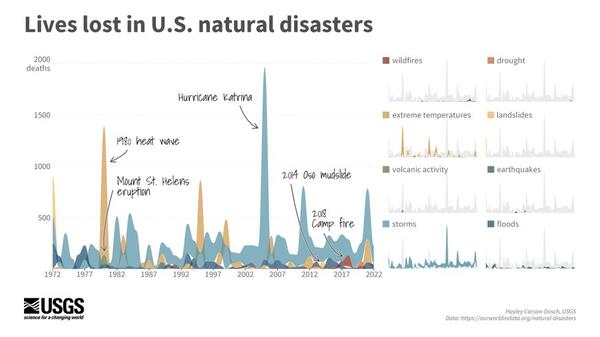Timeseries: tiles - Changes in U.S. water use from 1985 to 2015
Timeseries: tiles - Changes in U.S. water use from 1985 to 2015A tile map of the U.S. with alluvial charts for each state and the nation that show changes in the total volume of water use from 1985-2015 across eight categories (thermoelectric, irrigation, public supply, industrial, aquaculture, mining, domestic, and livestock).








